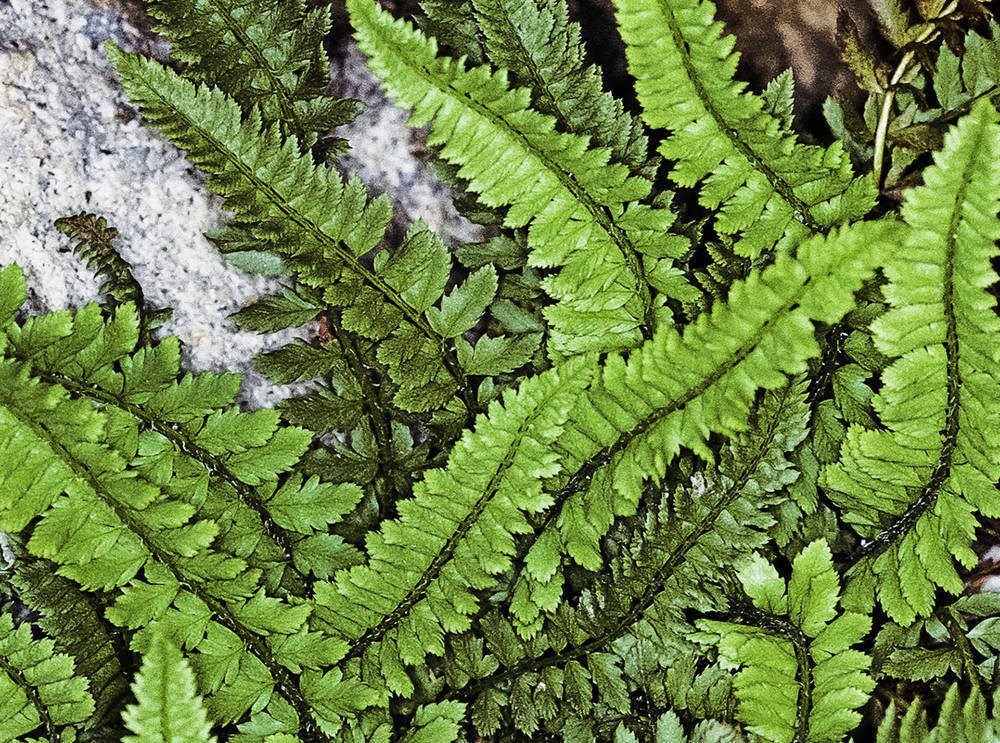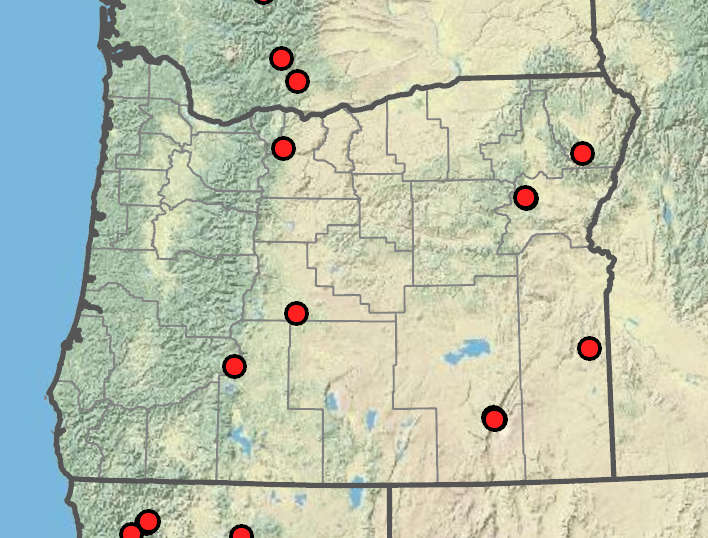Polystichum kruckebergii
Polystichum scopulinum
Kruckeberg's holly fern, Kruckeberg's sword fern
mountain holly fern, rock sword fern
ascending.
erect.
small, mostly under 20 cm; bulbils absent.
small; to about 40 cm; bulbils absent.
variable in length from very short up to almost 50% of the leaf length; chaffy at base;
scales sparser distally and present on at least the proximal part of the rachis.
highly variable in length; from short to over 33% length of the leaf.
1-pinnate-pinnatifid (sometimes 1-pinnate), narrowly lanceolate, not much reduced basally;
microscales narrow, confined to the abaxial costa.
1-pinnate-pinnatifid to more or less bipinnate proximally, linear-lanceolate; to 25 × 6 cm; widest below mid-length and narrowed to the apex and base;
microscales narrow, confined to the abaxial costa.
more or less ovate; small; to about 1.5 cm, overlapping, usually twisted out of plane;
distal part strongly spiny-dentate with spreading spines; a few proximal segments more deeply incised, with several spreading spines, acroscopic lobe enlarged, sometimes forming a distinct pinnule.
ovate to narrowly ovate; to approximately 3 cm long, overlapping and twisted out of plane;
distal part of pinna toothed, incised less than halfway to costa;
teeth acute but not spine-tipped;
proximal part (at least on the lower pinnae) deeply incised with 1– several pairs of pinnules; each entire to lobed/toothed, acroscopic pinnule somewhat enlarged.
with entire indusium.
with irregularly toothed indusial margins.
=164.
=164.
Polystichum kruckebergii
Polystichum scopulinum
Rocky places. 800–3000 m. BR, BW, ECas. CA, ID, NV, WA; most of western North America. Native.
Polystichum kruckebergii can appear pinnate, with even the proximal pinna segments not deeply lobed. It then resembles P. lonchitis, from which it differs in its more rounded pinnae with broader teeth. It can also be hard to distinguish from small specimens of P. scopulinum. The spores of P. kruckebergii are darker in color than the brown or yellow/brown spores of P. scopulinum. According to Wagner (1979), both species are allopolyploids that share one common parent (P. lemmonii × P. lonchitis = P. kruckebergii; P. lemmonii × P. munitum = P. scopulorum).
Rock crevices. 700–3000 m. BR, BW, Casc, ECas, Owy, Sisk. CA, ID, NV, WA; western and northeastern North America. Native.
This species is very similar to the rarer P. kruckebergii; see comments under that species.
Duncan Thomas
Duncan Thomas
- Local floras:
BC,
CA,
OR,
WA
- Local Web sites:
CalFlora,
CalPhotos,
Flora NW,
PNW Herbaria
WildflowerSearch
iNaturalist (observations)
USDA Plants Database
- LBJ Wildflower Center
- SEINet
- Plants of the World Online
- Encyclopedia of Life
- Wikipedia
- Google Image Search
- Local floras:
BC,
CA,
OR,
WA
- Local Web sites:
CalFlora,
CalPhotos,
Flora NW,
PNW Herbaria
WildflowerSearch
iNaturalist (observations)
USDA Plants Database
- LBJ Wildflower Center
- SEINet
- Plants of the World Online
- Encyclopedia of Life
- Wikipedia
- Google Image Search





